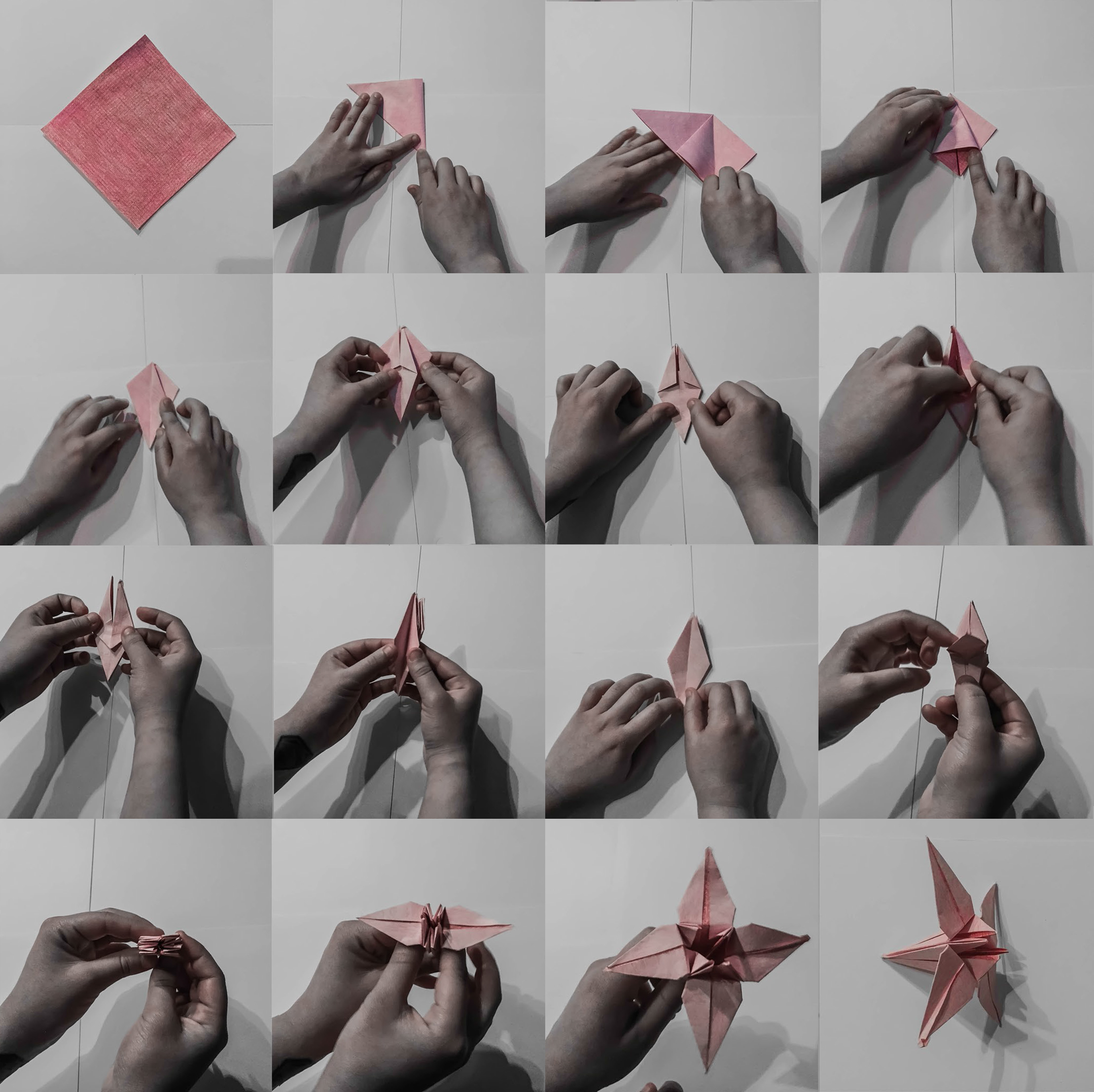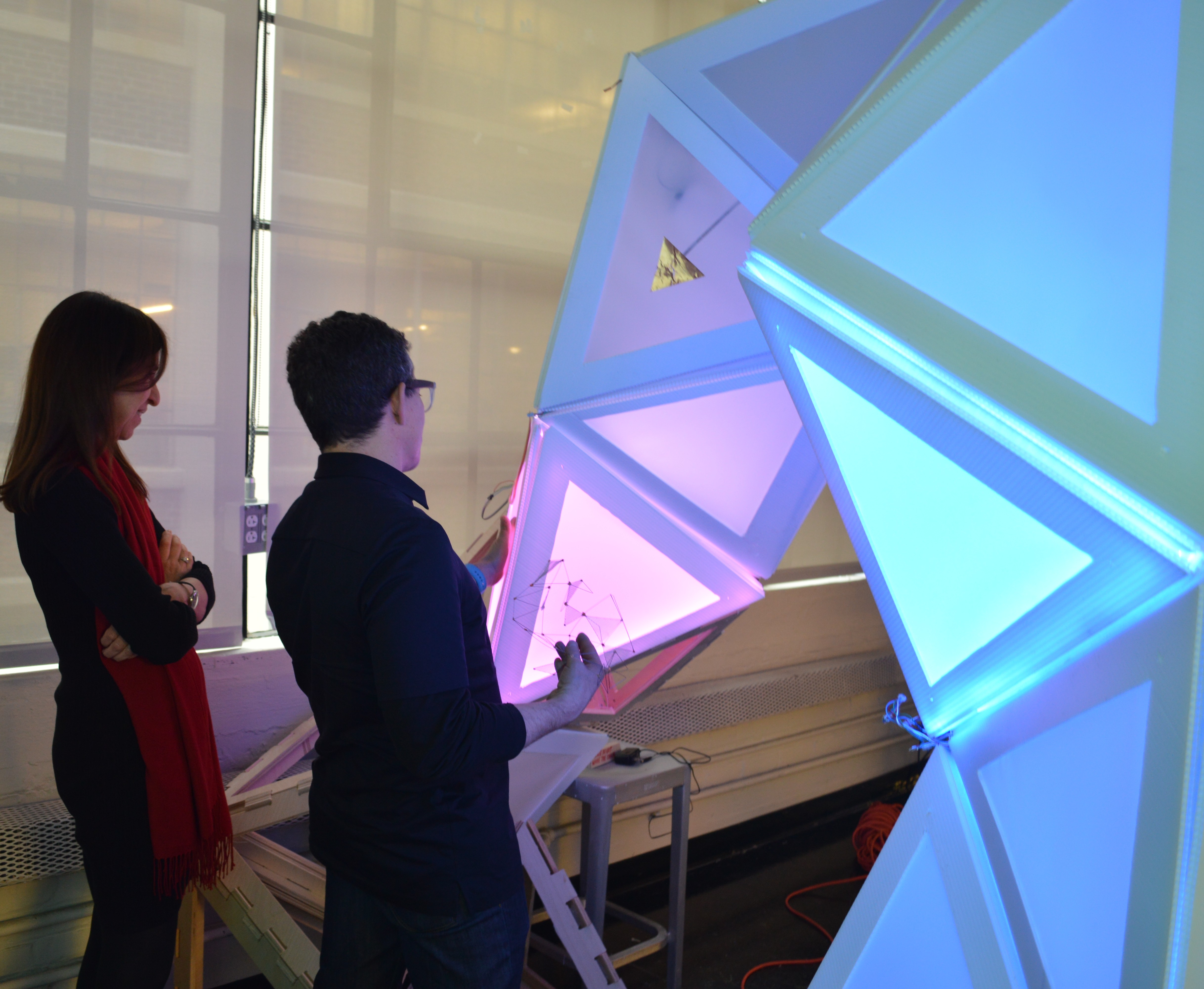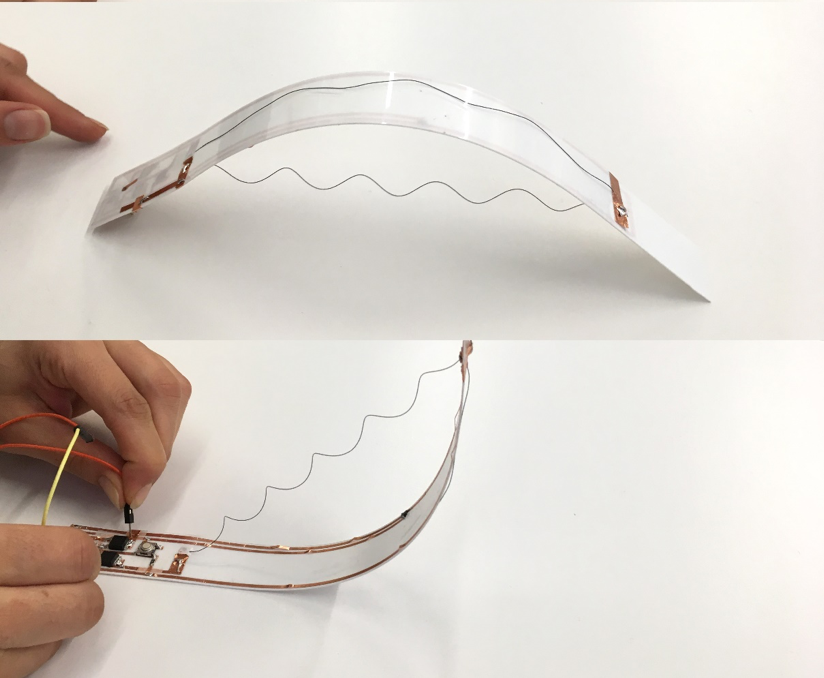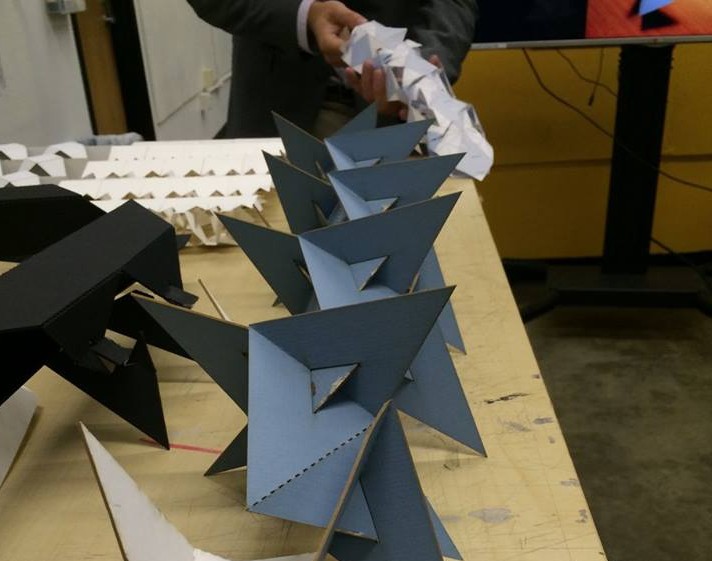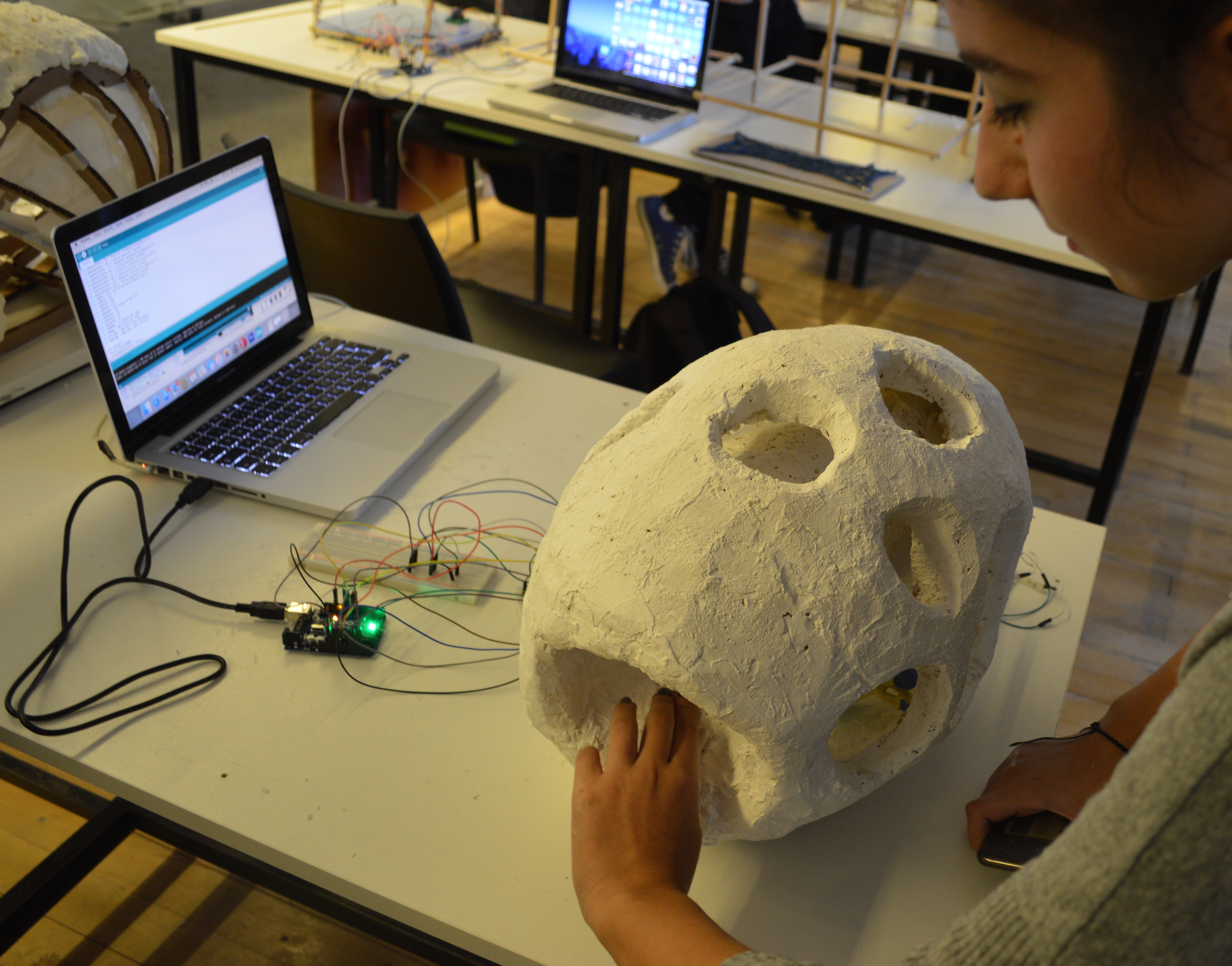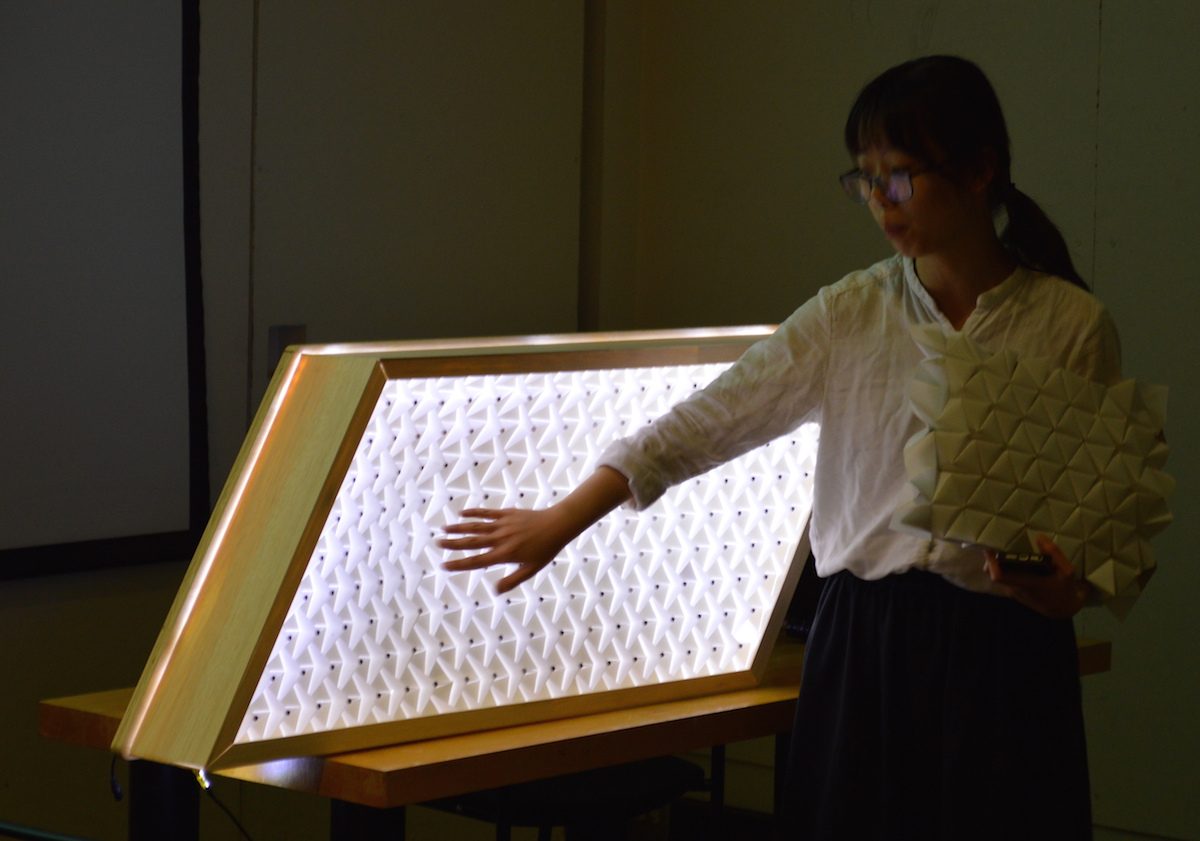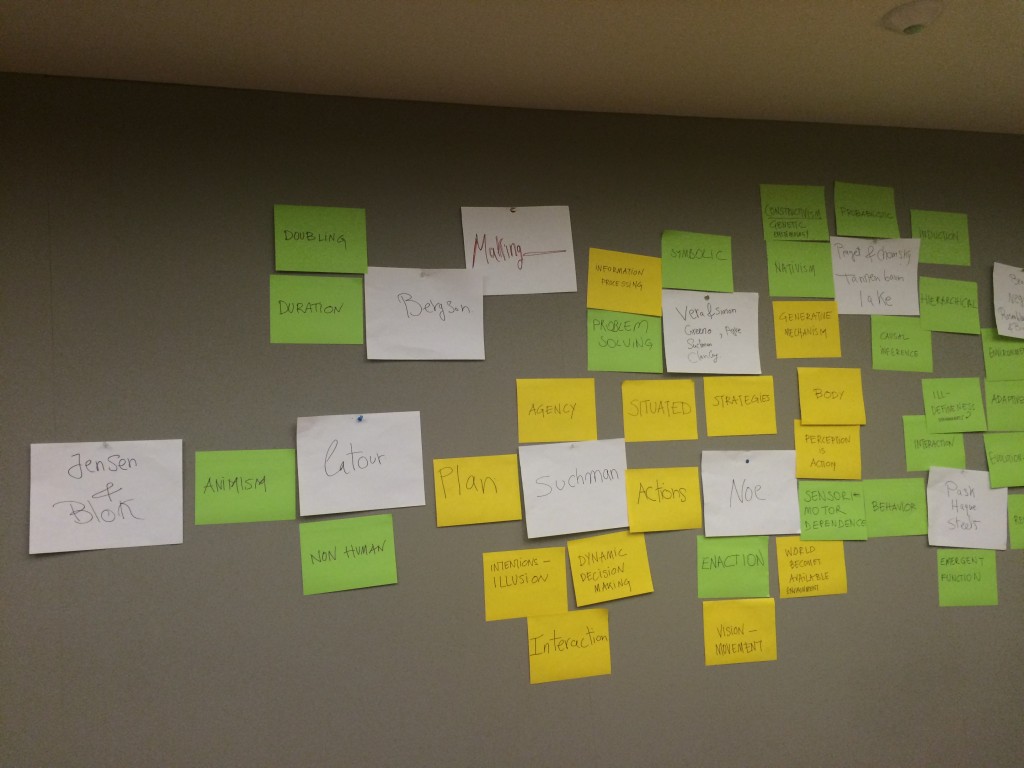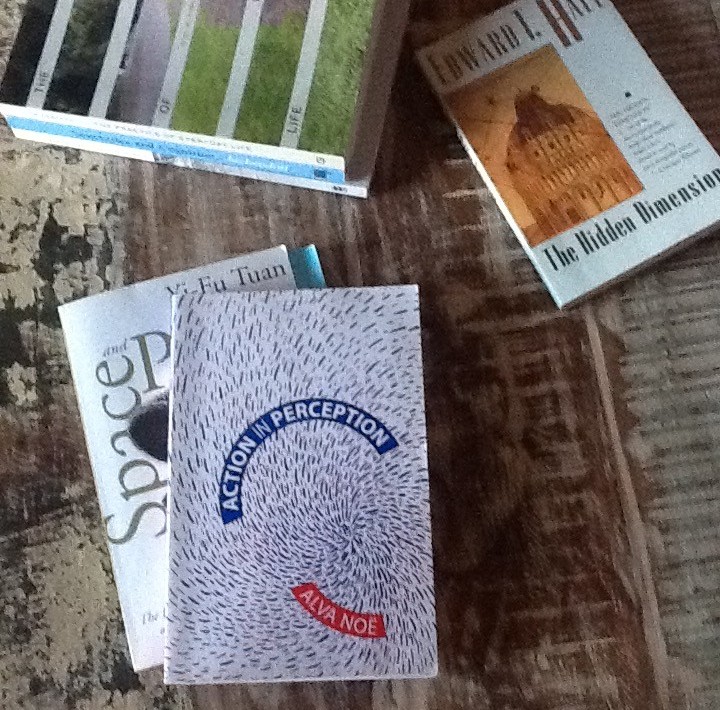4.s52 TEMPORALITY IN [COMPUTATIONAL] MAKING
Fall 2017
This seminar/project subject explores the topic of Temporality within the context of the cross-disciplinary research area of Computational Making. Making is viewed as an active, time-based, improvisational, and embodied process carried out by a person (or people) to make tangible things and their intangible effects – whether drawing a picture on paper, weaving a basket, 3D printing a model, creating shadows and light, or constructing a building – or to make spaces through movement and perception. The overarching goal is to contribute new understandings of the relationships between abstract, formal computation and active, embodied making.
Making Spaces: Lightweight Structures for Interactions
IAP 2017
Students will make lightweight simple structures, such as small pavilions, with embedded electronics in them. Students will use digital fabrication machines and tools, and learn the basics of electronics and programming (Arduinos) to create spaces, experiences and interactions. The class introduces a new, embodied process of making and learning. It also studies this new making process in human-machine interaction, and its application and implications in learning to create spaces.
4.s52 PROJECTS IN COMPUTATIONAL MAKING
Fall 2016
This project-based subject is focused on Computational Making, a cross-disciplinary research initiative hosted by the Computational Making research group. It is open to students who are interested in developing, or currently working on, ideas related to the work of this group and research area. It is intended to provide a forum for discussion and feedback among students with common interests in the area, and to promote development of new research directions.
Reactive Making: Computational Design and Making Workshop
Fall 2015,Boston Architectural College
Reactive Making workshop explores the application of digital fabrication for design processes. The goal of the workshop is the discovery of computational methods for the design and production of objects that communicate the physical and perceptual aspects of the environment. Students are introduced with a variety of tools and concepts including computational making, shape grammars, computer-aided design, computer-controlled cutting and 3D model making, interface and application programming, and sensors technologies. The workshop explores the critical intersection of making and fabrication both as modes of exploration and production.
Computational Making Workshop in Enormous Smallness Architecture Studio
Fall 2015, Istanbul Technical University (ITU)
In Fall 2015, Dina El-Zanfaly applied her teaching methodology, I3 (Imitation, Iteration and Improvisation), in a six weeks workshop as a part of an architecture studio in Istanbul Technical University (ITU) led by an alumna from the MIT Computation group, Mine Ozkar, with funding from the Agha Khan travel grant. The studio theme was “Enormous Smallness,” in which second year undergraduate students designed and built scaled prototypes of nooks and crannies for children. The team had recently installed digital fabrication machines in the school, and some students used electronics and Arduinos in their projects for the first time. By using I3 it was proved that it could be used in any context and theme for novices to learn how to make anything with or without digital fabrication machines. During the course, students experienced working with different materials, studied structure and form, and learned basic CAD/CAM techniques.
4.552 Computational Making Workshop: Light and Motion
Spring 2015, MIT
Making is a process of creating artifacts, spaces, buildings and experiences, in which there is a continuous flow between shape and material. How then do we learn to make something? What can we learn by making? What are the potential roles of computational tools, theories, and practices in making? And where do makers, designers, entrepreneurs and students begin? How do they learn how to realize their ideas and to describe their making activities?
Computational Making: Light and Motion introduces a new, embodied process of making and learning called I3. This process, I3, consists of Imitation, Iteration and Improvisation. The course studies this new making process in human-machine interaction, and its application and implications in learning to create objects. However, the course is not just about learning how to make prototypes, it is about building the learner’s sensory experience and spatial skills by teaching him/her a new process of human-machine making. With I3, machines are companions for makers to generate and materialize ideas instead of the means for materializing a prototype for an already designed and planned digital model. Students will be able to apply this process to make almost anything with digital fabrication machines as well as without them. They will make both tangibles, such as physical artifacts, and intangibles, such as experience, light and motion.
For the first half of the semester, students will learn how to use rules to describe and make – design and build – lighting units. Shape and material will be thoroughly examined and tested. For the remainder of the semester, students will develop their prototypes further by adding motion and electronics to their lighting units. Students will be also required to deliver a documented process of their work.
4.584 ReaDCG:Making ______
Fall 2014, MIT
ReaDCG is a collective space for sharing, reading, and discussing texts that broadly relate to the field of Design and Computation – its history, theory, and practice. Participants complete weekly readings, lead discussions and make presentations, and contribute to a on-going bibliography around the topic of computational making that draws from a diversity of fields from architecture to anthropology to computer science to philosophy and more. Each semester, the discussions are underlined by a theme, which sets questions for open-ended exploration. The Fall 2014 theme is Making _____.
Making ____ will continue and expand the ongoing exploration on the critical and productive potential of “making” for the theory and practice of design computing that was initiated by last year’s ReaDCG, themed Computational Making. Last year’s theme set the stage for a broad investigation of “making” as a critical counterpoint to a long intellectual tradition in which “design” has been predominantly theorized and described in abstract, disembodied, and immaterial terms. This semester, we will continue bringing together work from a diversity of fields that rethink the formation and use of things, spaces, and beyond as a situated and embodied activity, entangled within dynamic social, cultural, and physical environments. Making ____ invites participants to fill in the blank and examine the implications of “making” for their area of research. The goal is to extend “making” to encompass any active, productive, and constructive processes – for example, making things, scapes, spaces, use, meaning, sense, learning and others.

Instructors: Athina Papadopoulou; Cagri Hakan Zaman
Faculty Supervisor: Terry W. Knight
Course Website
4.553 Perception Creatures: Inventing Ways of Sensing and Making Space
IAP 2014, MIT
In this workshop, student teams will invent their own ‘creature’ that will act as a perception machine for the analysis and making of space. The creature, which can be either an extension of the body or an autonomous device, will provide the sensory data from a physical space. The sensory data will then form the perceptual framework for designing new spatial experiences. The workshop will be structured around three exercises: The first, to design and make the perception creature. The second, to experience a physical space through the creature’s body, collect and present the data. The third, to make a space from the creature’s experience by attaching material and volumetric qualities to sensory inputs.
Spatial understanding derives from the synergy of our senses. We experience a space not only by seeing but also by touching, listening, feeling, smelling and moving. Architectural discourse has to a great degree focused our understanding of space in visual patterns and formal elements. Aiming at extending our spatial understanding, this workshop actively engages students to uncover perceptual dimensions of space through an exploration of sensory and tracking technologies, designing and making. We will explore ways of capturing and representing the senses as well as ways of making space drawing upon the senses.
The workshop is designed upon an interdisciplinary framework, extending basic design and making skills, and also building skills in programming, visualization and the use of sensors and microcontrollers. It is addressed to undergraduate students across disciplines but is also open to graduate students. Students will form groups and work as cross-disciplinary teams throughout the workshop.
4.584 ReaDCG: Computational Making
Fall 2013 and Spring 2014, MIT
ReaDCG is a collective space for sharing, reading, and discussing texts that relate broadly to the field of Design and Computation — its history, theory, and practice. Each semester, the discussions are underlined by a theme, which sets questions for open-ended exploration. The goals of the seminar are to establish an interdisciplinary community where seminar members identify the intersections of their interests and use these intersections to inform the content of their research.
The Fall 2013 theme is Computational Making. The seminar will explore the idea of making, with emphasis on the material, perceptual, temporal, and situational aspects of making. Making will be construed broadly — from drawing a design on paper, to producing an image on a computer screen, to weaving a basket, to 3D printing a model, to constructing a building.
Computational design has been an area of research and practice for several decades. Today’s computer “script” is the computational equivalent of a “design”. The ongoing fascination in computational circles with so-called “design thinking” and “design reasoning” is symptomatic of the Albertian view of design. What about computational making? (No, it’s not about digital fabrication.)
Students will complete weekly readings, lead discussions and make presentations, and contribute to a on-going bibliography around the topic of computational making that draws from a diversity of fields from architecture to anthropology to computer science to philosophy and more. Credits are dependent on work commitment and arranged with the instructors.
